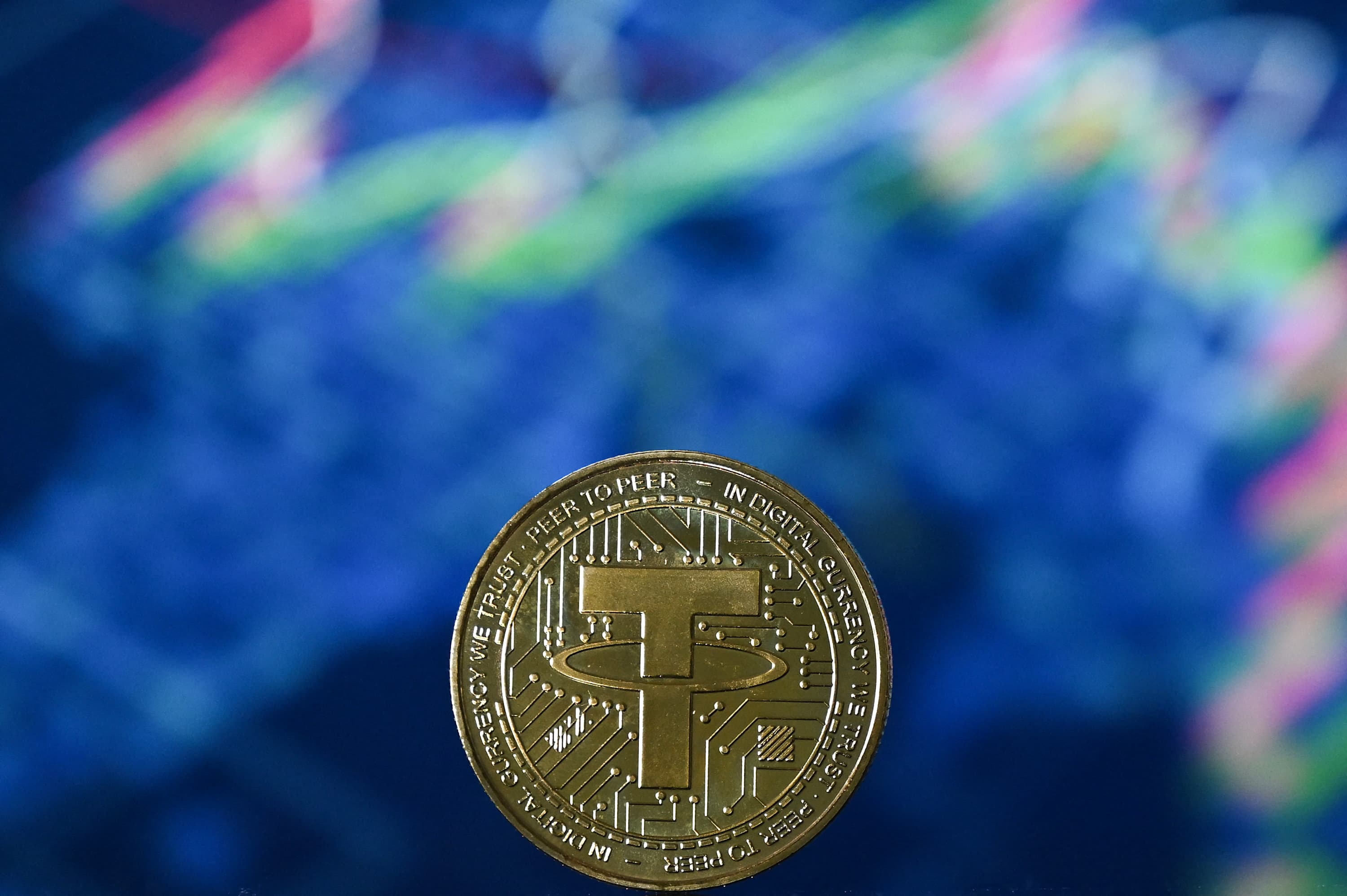
- Singapore’s financial regulator said on Tuesday that it has finalized rules for a type of digital currency called stablecoin.
- Reserves belonging to stablecoins should be held in low-risk, highly liquid assets. It must equal or exceed the value of the stablecoin in circulation at all times, the rules say.
- The stablecoin market is valued at around $125 billion, with two tokens – Tether’s USDT and Circle’s USDC – controlling nearly 90% of the market cap.
Stablecoin Tether and USDC are dominating the market.
Justin Tallis | Afp | Getty Images
Singapore’s financial regulator said on Tuesday it has finalized rules for a type of digital currency called a digital stablecoin, making it among the first jurisdictions globally to do so.
Stablecoins are a type of digital currency that is designed to hold a stable value against fiat currency. Many claim to be backed by a reserve of real world assets, such as cash or government bonds.
The stablecoin market is valued at around $125 billion, with two tokens – Tether’s USDT and Circle’s USDC – controlling nearly 90% of the market cap.
But stablecoins are not widely regulated around the world.
The Monetary Authority of Singapore (MAS) framework sets out some key requirements:
- Reserves belonging to stablecoins should be held in low-risk, highly liquid assets. It must equal or exceed the value of the stablecoin in circulation at all times
- Stablecoin issuers must return the face value of the digital currency to its holders within five business days of the redemption request
- Issuers must also provide “appropriate disclosures” to users, including the results of an audit of reserves.
These rules will apply to stablecoins that are issued in Singapore and mimic the value of the Singapore dollar, or any G10 currency, such as the US dollar.
Stablecoins that fulfill all requirements under the rules will be recognized by the regulator as “MAS regulated stablecoins.” MAS said this would distinguish stablecoins from unregulated tokens.
Singapore has sought to position itself as a digital currency hub, and is looking to attract foreign companies amid criticism from the cryptocurrency industry toward the US regulatory regime.
Stablecoins such as USDT and USDC are usually the backbone of cryptocurrency trading. It allows traders to enter and exit different cryptocurrencies without ever switching back to fiat currencies. Stablecoin issuers argue that tokens can be used for many purposes, including transfers.
But there has been criticism of stablecoin issuers about the transparency of the reserves they hold. Singapore aims to increase visibility in the industry.
“MAS’s regulatory framework for stablecoins is aimed at facilitating the use of stablecoins as a trusted digital medium of exchange, and as a bridge between the digital asset ecosystem and the asset ecosystem,” said Ho Hern Shin, Deputy Director General for Financial Supervision at MAS. statement.
Last year, the collapse of a so-called algorithmic stablecoin called UST put this type of stablecoin in the crosshairs of regulators. Unlike USDT and USDC, ETs were governed by an algorithm and had no real assets such as bonds in their reserves.
Singapore’s stablecoin framework places it among one of the first jurisdictions to have such rules. In June, the UK passed a law giving regulators the power to supervise stablecoins, although there are no specific rules yet. Hong Kong, meanwhile, is undergoing a public consultation on stablecoins and is seeking to introduce regulation next year.

“Web maven. Infuriatingly humble beer geek. Bacon fanatic. Typical creator. Music expert.”





More Stories
Bank of Japan decision, China PMI, Samsung earnings
Dow Jones Futures: Microsoft, MetaEngs Outperform; Robinhood Dives, Cryptocurrency Plays Slip
Strategist explains why investors should buy Mag 7 ‘now’